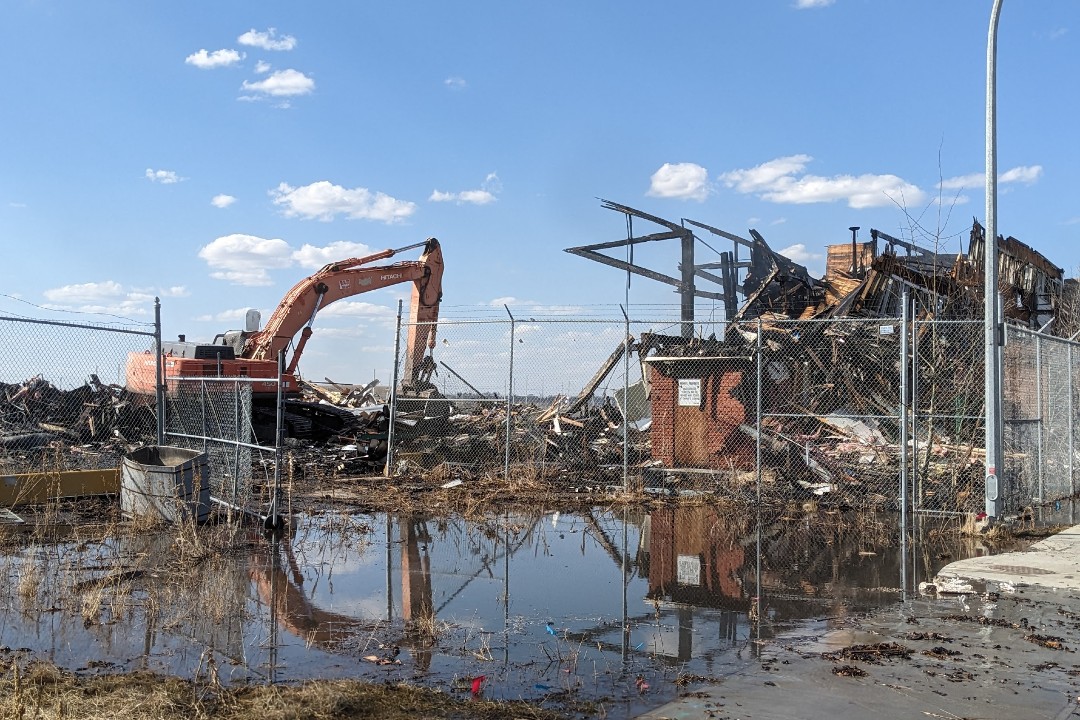
Hangar 11 loss called a crucial moment for Edmonton architecture
By
 Stephanie Swensrude
and
Stephanie Swensrude
and  Tim Querengesser
Tim Querengesser
Dan Rose swore as he watched the flames destroy Hangar 11 on April 22. "I was like, 'For Christ's sakes, we just can't catch a break,'" he told Taproot.
Hangar 11, built at the former city airport in 1942, is likely not top-of-mind for most of Edmonton, and that's Rose's central point about it. It bothers him that a building so integral to the city's modern origin story — from its role during the Second World War to its post-war air links to the Northwest Territories — could be forgotten. "You could pull a thread on each of those (narratives) and I think you'd end up at the same place with like, 'Wow, this was a pretty significant place in terms of social, cultural, (and) economic development of Edmonton as a region,'" Rose said.
That made the successful push to save the utilitarian but storied building from being flattened even more important. Rose, who once chaired the Edmonton Historical Board, had fought for years to save it, bugging councillors and shrewdly pushing the hangar onto the National Trust for Canada's annual list of the top 10 endangered buildings in 2017. Then, in 2018, he and others convinced city council not to demolish the asbestos-laden building and to sell the land to NAIT, as administration had proposed. Rose said it was the heritage community's first "big win" after decades of losses (from the Tegler Building in the 1980s to the Kelly Ramsey fire in 2009 to the loss of the Leamington Mansions in 2015).
Hangar 11's saviour was an idea from artist, author, and architect Tim Antoniuk of Architure, who bought the property from the city for $1.5 million in 2021, or less than half its assessed value. The proposal, estimated to cost up to $83 million, was to preserve but re-imagine the hangar as more than 200 student apartments mixed with commercial bays for shops. "We've got an opportunity here to introduce globally a new type of winter city design," Antoniuk said of the idea in 2021. "We've got this incredible hangar, you know, you don't really build something like this today."
From that point hence, Rose said, he and others intended to use Hangar 11 as the hopeful story about a new era for Edmonton. But the pandemic slowed the redevelopment project and made finding investment hard. And then came the fire.
The meaning of the fire, Rose said, is hard to accept. It erases more of Edmonton's built history, he said, but it could also accelerate losses in the future by accelerating indifference and disconnection. Meanwhile, the city's own tools to preserve buildings are simultaneously becoming antiquated, underfunded, and confusing for advocates or investors to engage with, he said.
"Every time we lose one of these generational components of our urban fabric, it just exacerbates the problem we had that got us there in the first place, which is (that) we actually have no fucking idea who we are as a city," Rose said. "To talk about history on that scale, we don't have a lot of just nice, big, architectural buildings of heritage quality to begin with, but especially ones with nationally historical significance."
Without changes and a re-awakening of Edmonton's history advocacy, big buildings "will continue to just be knocked down because there aren't sufficient tools or a regulatory framework to do anything with them," he said.



